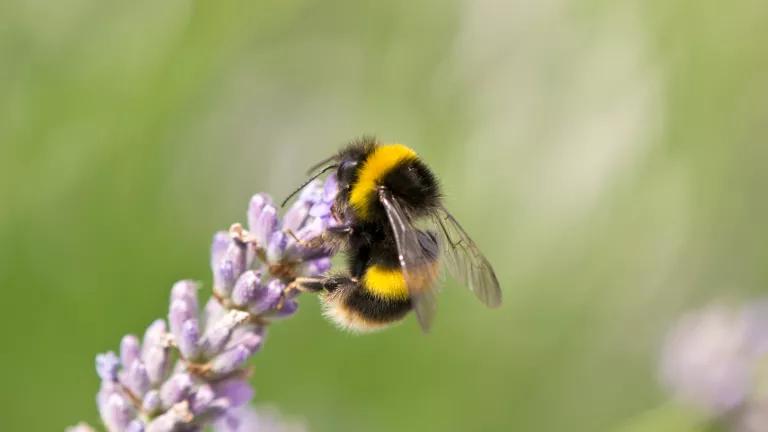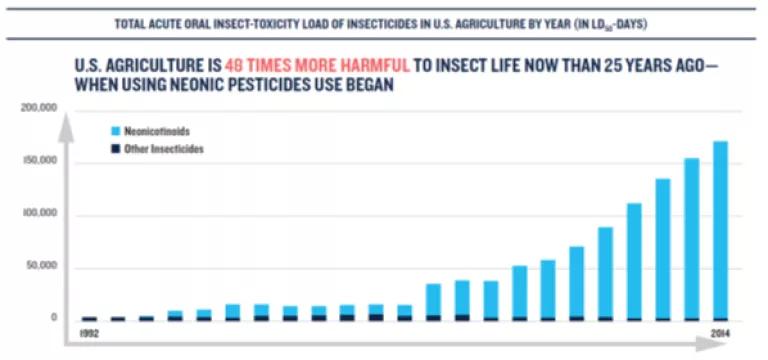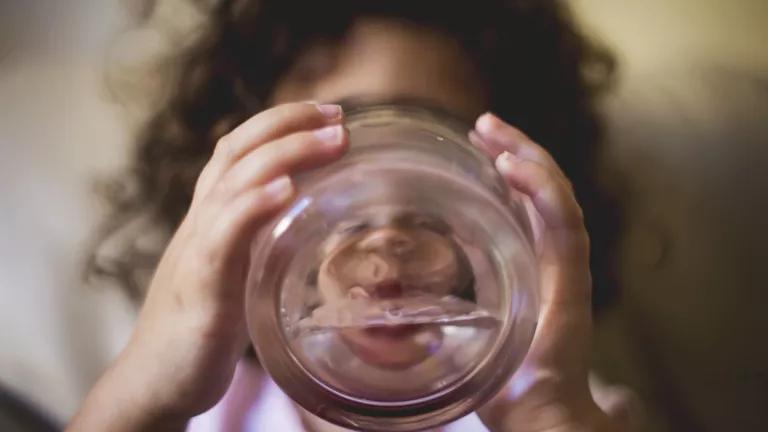NRDC Sues to Close Huge California Pesticide Loophole
NRDC has sued the California Department of Pesticide Regulation for its failure to regulate crop seeds treated with pesticides. These "treated seed' uses are major sources of widespread pesticide contamination, and pose threats to pollinators, other wildlife, and people.

Seed treatments have been shown to have significant impacts on pollinators. Neonic seed treatments are especially harmful.
Benjamin Watson via Flickr, CC BY 4.0
California’s regulatory program for pesticides is often heralded as the country’s gold standard. DPR’s systems for tracking and evaluating pesticides are, in many ways, second to none. But the program suffers from a fatal flaw—one that leaves people and wildlife at risk from pesticides, and which will prevent DPR from ever truly achieving its vision of “Sustainable Pest Management.”
The flaw? DPR does not consider treated seeds, crop seeds that have been pre-treated with a mix of chemicals before planting, to be “pesticides.” As a result, all pesticide-treated seeds entirely escape DPR’s regulatory program. That is a BIG deal for three reasons:
- DPR does not control what pesticides are used in California soil. Because DPR doesn’t regulate treated seeds, the seeds can come into California from out of state treated with just about anything—and DPR has no way to stop it. Using historical inspection data from the California Department of Food and Agriculture, DPR found that over half of treated seeds inspected were treated with pesticides that weren’t approved for seed use in California.
- Treated seeds are one of the largest uses of pesticides in California and the country, yet they go undetected. Nearly all corn—and much of other crops from cotton to lettuce— is grown using seed treated with pesticides before planting. The result? Hundreds of millions of acres nationwide are covered with pesticides applied as seed treatments. In fact, DPR has admitted that uses of bee-killing neonicotinoid insecticides (neonics) on treated lettuce seeds may be anywhere from five to thirty-five times higher than the currently known, tracked uses of neonics on lettuce. Until DPR gets its act together, we won’t know the full extent of pesticide use in California.
- Treated seeds harm wildlife and contribute to massive contamination of soil and water. The vast majority of the chemicals applied to a seed often end up in the environment. For example, typically, 95% of the neonics applied as seed treatment remain in the soil, where they remain for years and build up over the course of multiple planting seasons. Research links seed treatment use with widespread water contamination in heavily agricultural areas, and a review of over 1,100 studies by Cornell University researchers found that seed treatment uses present significant risks to pollinators. At the same time, some of the most common treated seed uses often don’t benefit farmers.

Over the past 25 years, researchers estimate that U.S. agriculture has become about 48 times more acutely toxic to insects. This is driven in large part by the explosion in neonic-treated seed use.
Data from DiBartolomeis et al., An assessment of acute insecticide toxicity loading (AITL) of chemical pesticides used on agricultural land in the United States, PLoS ONE 14(8): e0220029 (Aug. 6, 2019), http://bit.ly/2ZEmCtu.
For these reasons, NRDC and our partners in September of 2020 filed a legal petition demanding that DPR close this gaping loophole and regulate treated seeds. But DPR rejected the petition, reiterating its position that treated seeds are not “pesticides” and, therefore DPR was powerless to regulate them.
Nevertheless, DPR acknowledged that the petition identified “significant issues of concern,” and convened a workshop to discuss the issue of treated seeds. At that November 2021 workshop, DPR’s presentation only underscored the dire need for change. Based on a review of seed treatments used in the state, it found that less than half were treated with products actually analyzed and approved by DPR.
Now, it has been almost two and a half years since NRDC and our partners filed the seed petition—and DPR has still done nothing to address the problem. It’s time for the courts to step in.
Our lawsuit challenges DPR’s longstanding policy that treated seeds are not “pesticides” under California law. Specifically, we allege that DPR developed this policy without going through the procedures required by California law, designed to ensure that agency decisions are reasoned and consider input from the public.
If successful, our lawsuit will force DPR to reckon with its longstanding, unlawful interpretation of California law--requiring the agency to either finally close the treated seed loophole or attempt to publicly defend the indefensible: that it can turn a blind eye to what may be one of the largest, most widespread, and harmful uses of pesticides in the state and still protect California’s environment and people as it must do by law.
If California is going to meaningfully address widespread pesticide contamination that decimates pollinators and ecosystems and threatens human health, it is absolutely critical that DPR act get a handle on treated seed use. This lawsuit keeps the pressure on DPR to do just that.




